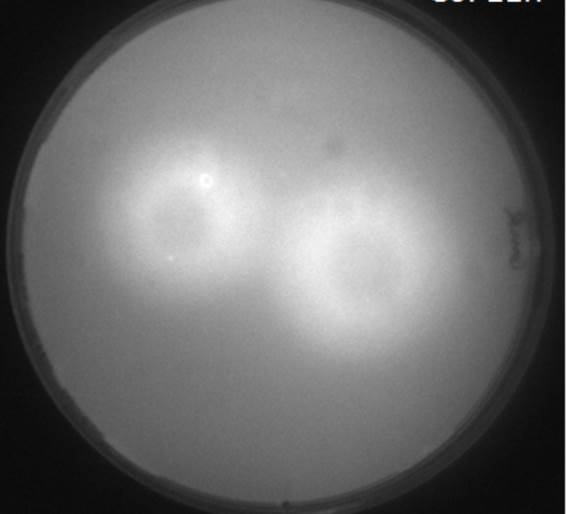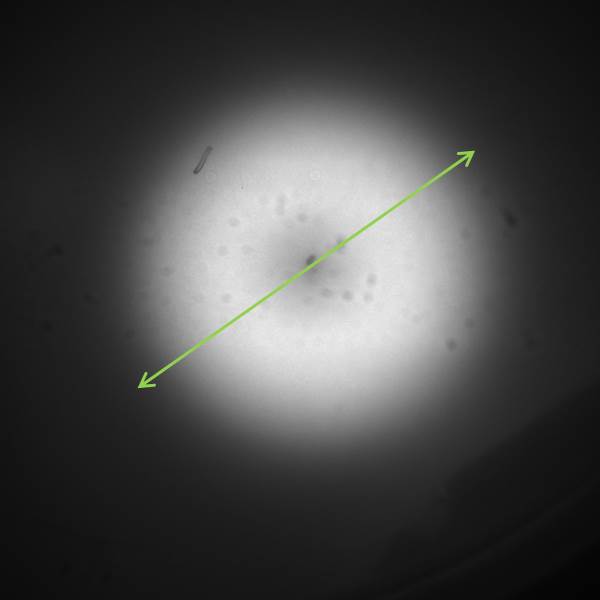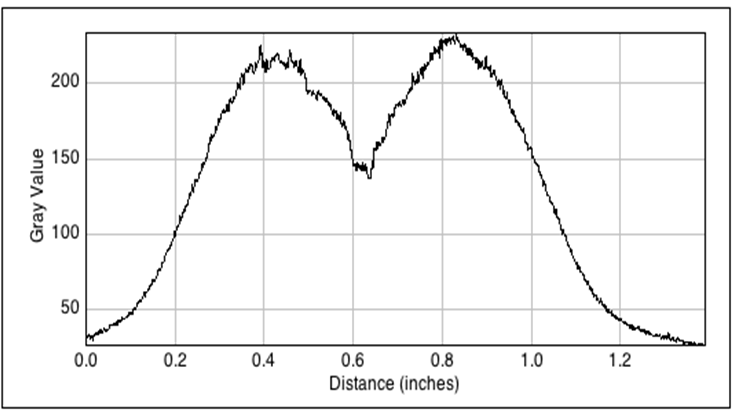Team:ETH Zurich/Experiments 2
From 2013.igem.org
Contents |
Signaling molecule
N-3-Oxo-Hexanoyl-l-Homoserine Lactone belongs to the family of Acylated Homoserine Lactones (AHL).
In our project , we use the LuxI-LuxR quorum sensing system to drive the signal from the sender to the receiver cells. The LuxI sender construct produces OHHL. The OHHL diffuses in the agar to reach the receiver cells containing LuxR which in turn triggers the hydrolase expression in the receiver colonies. The receiver cells comprise promoters that are tuned to express specific hydrolases depending on the amount of incoming OHHL. The OHHL diffusion is very important in that it drives the enzyme (hydrolase) expression in the non-mines depending on different high pass filters. The OHHL concentration processed by the receiver cells depends on the number of mine colonies. Through an enzyme-susbtrate reaction that generates a colored product the player obtains information about the number of mines surrounding a non-mine.
Diffusion tests of OHHL
In our biological circuit design, the diffusion of OHHL from the sender to the receiver is vital in order to express the different orthogonal hydrolases. This is because the hydrolases are expressed under the control of plux promoters which are induced by OHHL.
In order to visualize the OHHL diffusion, experiments were carried out, using GFP as reporter. We started with using the part [http://parts.igem.org/Part:BBa_J09855 BBa_J09855] cloned with GFP as our receiver. We tested the sender with part [http://parts.igem.org/Part:BBa_K805016 BBa_K805016] under a constitutive promoter. double-layer agar tests (See protocol) were performed with the GFP receiver cells spread evenly as a top layer agar, and the 1.5μl sender cells as source of signal OHHL. The diffusion pattern was observed for 12 hours with a molecular imaging software. The distance of diffusion was noted as 1.5cm as the radial diffusion distance across the sender colony.
The time and distance data from these experiments were used for the spatio-temporal model of the OHHL diffusion.
The image to the left shows the GFP fluorescence in a double layer agar experiment after 11 hours. The test was performed to measure the time and distance of diffusion of OHHL from the sender to the GFP receiver. The scanned image of the plate was analyzed using the image processing program ImageJ . The analysis from ImageJ is shown in the picture to the right. The picture shows the GFP fluorescence in gray scale with distance in inches. The distance of diffusion can be seen as 1.2 inches, that is nearly 3 cm. Hence, for the further experiments, the colonies were placed apart from each other at a distance of 1.5cm in a hexagonal manner.
Diffusion tests in hexagonal grid with sender-receiver constructs
In single layer agar diffusion experiments we tested the diffusion from the sender colonies to the receiver colonies in different possible configurations. Different configurations of mines ( one, two or three) radially around the non-mines will lead to more OHHL that will be processed in the receiver colonies; due to more mines, but not due to more diffusion. 1.5μl of the receiver and sender cultures were inoculated in a hexagonal grid pattern in an agar plate and incubated for three hours. We then observed the diffusion patterns by scanning the plated with a molecular imaging software. Images of the GFP fluorescence were taken at time intervals of one hour and half hour as fluorescence started. Images taken after 11 hours showed GFP saturation.
The picture to the right shows the scanned GFP fluorescence image after 11 hours of incubation. The colonies are plated in a hexagonal grid. The green circles are the mine/sender colonies. The receiver colonies are those that process the diffused OHHL from the sender colonies. Interestingly, it can be seen that those receiver colonies that have more mines around have the highest fluorescence than those which have lesser mine colonies. The data from this experiment was also compared with the spatio-temporal model which surprisingly gave exact prediction in the model.
GFP diffusion with mutated pluxR promoter variants
See first : High pass filters
In order to test the GFP fluorescence pluxR promoters that were mutated by site-saturation mutagenesis , two layer agar experiments were performed with mutated and wildtype promoters. In every case, the expression was compared with a negative control without the sender (pconst-luxI) which will not induce the GFP expression. We followed the grid pattern with the different configurations of mines in a hexagonal pattern.The figure to the left shows the expression in the wildtype pluxR with the negative controls to the right of the picture. The figure to the right shows the expression in the mutated promoter with two point mutations in the sequence. The negative controls without the sender cells are to the right of the picture.
 "
"










